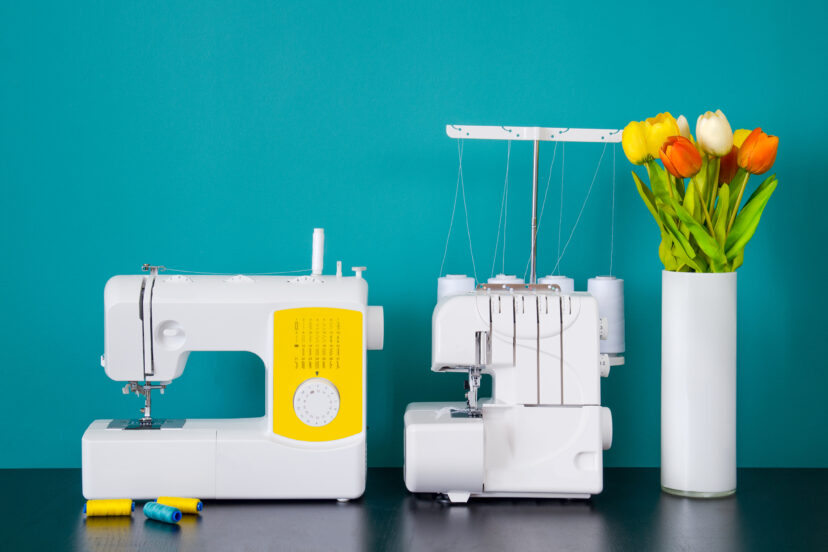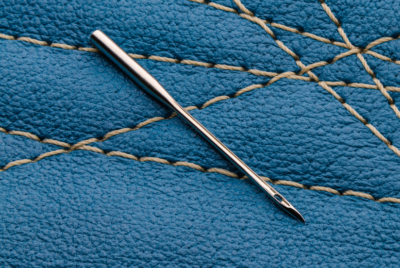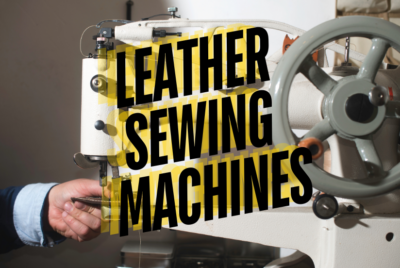Serger vs Sewing Machine: Differences and Benefits
Knowing the differences of a serger vs sewing machine can help you select the right machine for your projects. This can make all of the difference in your end results.
With the variety of sewing machines available, it is a challenge to choose the right type of sewing machine for your needs.
If you are a beginner sewist looking to make your first project, you need to choose the correct machine to start your sewing journey. It should allow you to easily accomplish whatever project your do.
If you are an experienced sewist, a more advanced machine that affords the opportunity to expand your designing capabilities is the best selection. Selecting a machine that can handle intricate work on decorative items might be your need.
The right machine will not only make your sewing experience more enjoyable but also improve your results. An added benefit is more efficient use of your time.
Although these machines might look similar their main functions are different. Each has unique capabilities that cater to different aspects of sewing and finishing. Each offers different benefits for the projects they are best suited for.
To guide you in your sewing machine selection process, here are descriptions of a serger sewing machine and a regular sewing machine. In addition there is information about the benefits, types of projects, and types of stitches each provides.
This guidance will be useful for the novice sewist and reminders for the experienced.
What is a Serger
A serger sewing machine is also known as an overlock machine. This specialized sewing tool is used for edging, hemming, or seaming.
Typically, it uses 2 to 4 threads and multiple needles to create an overcast stitch. Designed to sew over the edge of one or two pieces of cloth it wraps around the edge of the fabric to prevent fraying.
Known for their speed and efficiency, they are another tool for the experienced sewist. They can be a great addition for garment projects, especially stretchy and knit fabrics. Beginners or novice sewists might consider this the next step after practicing on a regular sewing machine.
Our article, “What is a Serger Sewing Machine“, gives a more detailed view of serger sewing machines.
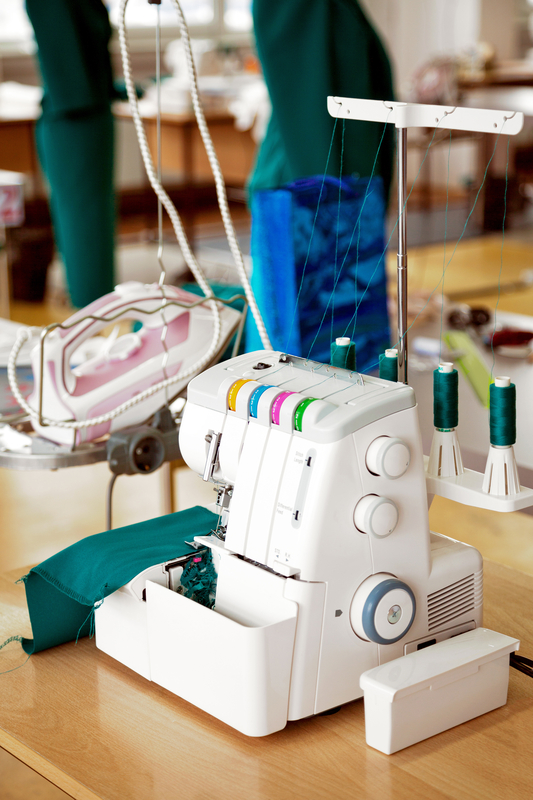
© Punkbarby | Dreamstime.com
What is a Sewing Machine
A sewing machine offers a broad range of stitching capabilities from basic to complex. Many homes have reserved a space for their own home sewing machine since their invention. Learning to sew was a required skill in earlier times when hand stitching was the norm.
The primary use for this type of sewing machine is to join pieces of fabric together. The machines mechanisms use two threads to create a lock stitch. The machine creates the lock stitch by joining a thread pulled by the needle with one coming from the bobbin.
Sewing machines handle a wide variety of projects. Their versatility ranges from simple stitches to decorative stitching and buttonholes. These functions allow for your creativity to take hold.
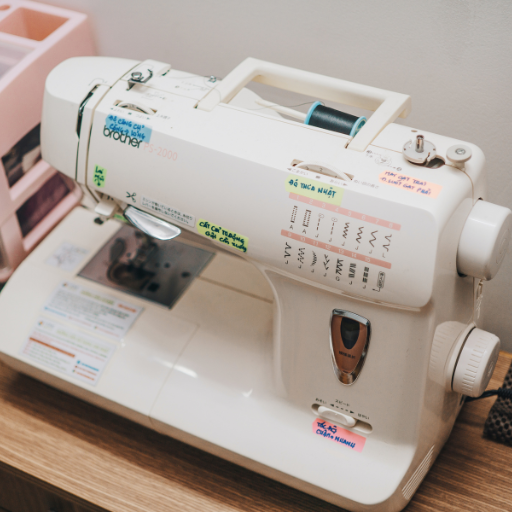
Sewing machines can perform specialized functions. Examples of these are quilting and embroidery. They can create results similar to a serger, but with a lot more effort.
Differences Between Sergers and Sewing Machines
Two main differences between a serger sewing machine and a sewing machine are the stitching capabilities and the finish they provide.
Sergers are great at creating clean, finished edges. They are particularly useful for stretchy fabrics. The machine helps to ensure seams stretch without breaking.
Stitching and trimming occurs at the same time. This not only gives a more professional look, it also is a time saver.
Conversely, a sewing machine offers greater versatility. The variety of sewing machine models give sewists a wide array of stitch types. This, in addition to buttonhole capabilities on some models, expands the project possibilities.
Sewing machines do not naturally produce finished edges like the serger. They require manual fabric cutting. Additionally, completing a seam will include other steps.
Serger vs Sewing Machine Comparison
Our article, “Sewing Machine Selection Criteria” provides a guide of the different things to consider when selecting your serger or sewing machine. Here we list the benefits, typical projects, and stitch types each machine provides.
Serger Sewing Machine
Benefits
Sergers provide several advantages, particularly in efficiency and seam quality. The machine can sew, trim, and finish a seam simultaneously. This dramatically reduces the construction time.
The overlock stitch produced by a serger is stretchy. This makes it ideal for garments and projects made from stretch fabrics.
Sergers create professional-looking rolled hems and decorative edges. This elevates the quality of homemade garments to near-commercial standards.
Projects
Serger machines are best suited for projects that require durable, stretchy seams or a professional finish.
They are ideal for constructing clothing that benefits from strong, stretchable seams like athletic wear, t-shirts and leggings. In addition, they create finishing edges on curtains and tablecloths.
Stitch Types
Sergers offer a variety of stitch types, each serving different purposes.
The most common is the 4-thread overlock, providing a strong, flexible seam. A 3-thread overlock stitch is lighter and finishes edges. Rolled hems, flatlock seams, and chain stitching are other options.
Reviews
Start your serger search by going to our review article “Best Selling Serger Sewing Machines“. We review 10 popular machines, summarizing key features, disadvantages and advantages, and user review ratings.
Sewing Machine
Benefits
The sewing machine’s main advantage is its versatility. It can create many different stitches, from a basic straight stitch, to a zig zag stitch, to decorative and complex patterns.
Sewing machines are capable of detailed work such as topstitching, buttonhole making, and attaching zippers. This makes them indispensable for detailed garment construction and a wide range of crafts.
Projects
Sewing machines are incredibly versatile, suitable for a vast array of projects. The types of projects range from clothing, home decor, bedding, and craft projects.
They are capable of managing detailed sewing projects. and a diverse range of materials, making them appropriate for novices and experienced crafters working on intricate patterns.
Stitch Types
Sewing machines offer an array of stitch types, each designed for specific purposes.
The straight stitch is the most basic and widely used, ideal for seams and topstitching. Zig zag stitches allow for stretch when worn. Applique uses these stitches to prevent fraying. Other stitches include the buttonhole stitch, stretch stitches for elastic fabrics, and decorative stitches for embellishing projects.
Conclusion
So which should you consider getting when you are looking at the serger vs sewing machine comparison. Both serger and sewing machines are invaluable tools in the sewing room. Each one has unique capabilities to make your sewing experience enjoyable.
A sewing machine provides the foundation for most sewing projects. The serger adds speed to complete tasks and provides the professional look.
Leveraging the strengths of each machine can expand your sewing capabilities. You can achieve a wider range of creative expressions. Understanding the capabilities and benefits of the serger vs sewing machine can greatly enhance your sewing projects.
If you are just starting your sewing adventure consider choosing a sewing machine. This approach will give you experience and help you determine what features you frequently use.
As you become more involved with sewing and begin to explore more complex projects, adding a serger will elevate your results to new heights.
FAQ
Can you serge with a regular sewing machine?
You can simulate a serging effect with a regular sewing machine, although with some limitations compared to a dedicated serger (overlock machine). Many regular sewing machines offer overcast stitches that mimic the overlocking effect. To achieve this, you would sew close to the edge of the fabric to prevent fraying, using an overcast stitch or a zigzag stitch. Some sewing machines also come with an overcast foot that helps guide the fabric and prevent the edge from curling, closely replicating the appearance and function of a serged edge. While this method won’t trim the fabric edge as a serger does, it’s an effective way to prevent fraying and achieve a neat finish with the tools available on a standard sewing machine.
What is a serger on a sewing machine?
A serger is not an attachment or feature of a regular sewing machine but a distinct type of sewing machine designed for a specific purpose. It primarily serves to finish the edges of fabric, making seams neat and preventing fraying by encasing the edge of the fabric with a looped thread.
RetroSewMachines.com is a participant in the Amazon Services LLC Associates Program. As an Amazon Associate, we earn from qualifying purchases. We also participates in other affiliate programs and may earn a referral commission if you purchase through links on this website. The information presented here is for general educational purposes only.

